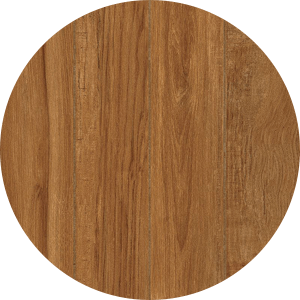
Scientific Name:
Ocotea porosa (Nees) Barroso, Lauraceae.
Other names and Related Species:
It is also known by the names of Canela-imbuia, Imbuia-amarela, Imbuia-brazina, Imbuia-clara, Imbuia-parda, Imbuia-rajada, Imbuia-preta, Umbuia. Ocotea catharinensis (black cinnamon) and Cinnamomum vesiculosum, two species typical of the Southern region of Brazil, exhibit similar characteristics.
Description of the Tree:
A tree that normally reaches a height of 15 to 0 m and a diameter of 50 to 150 cm, the trunk is thick and winding, forming a wide canopy. Its bark is a thick, dark grey, superficially fissured and has globular excrescences.
Wood Characteristics:
Very variable heartwood, ranging from yellowish-brown to reddish-dark brown, usually with the presence of darker, parallel or wavy veins. Right to reverse grain; irregularly glossy and smooth surface, characteristic and pleasant odor; bitter and astringent taste.
Region of Occurrence:
It is found throughout the center-south region of the state of Paraná, and in the states of Santa Catarina and Rio Grande do Sul.
Physical-Mechanical Properties::
Imbuia wood has a medium specific mass and mechanical resistance, with low volumetric retractability. It is considered of good natural durability.
Workability:
It is easily sawn and its work with machinery is equally satisfactory. It provides a good finish, receiving good varnish and paint. The fine powder released during its processing can cause dermatitis.
Suggested Uses:
Luxury furniture, decorative sliced panels, ornamental pieces, turned parts, plywood panels and partitions. It is used in civil construction as beams, rafters, slats, door or window frames, mouldings, panelling and the like; or in external parts such as supports, structures and so on.
Source: REMADE
